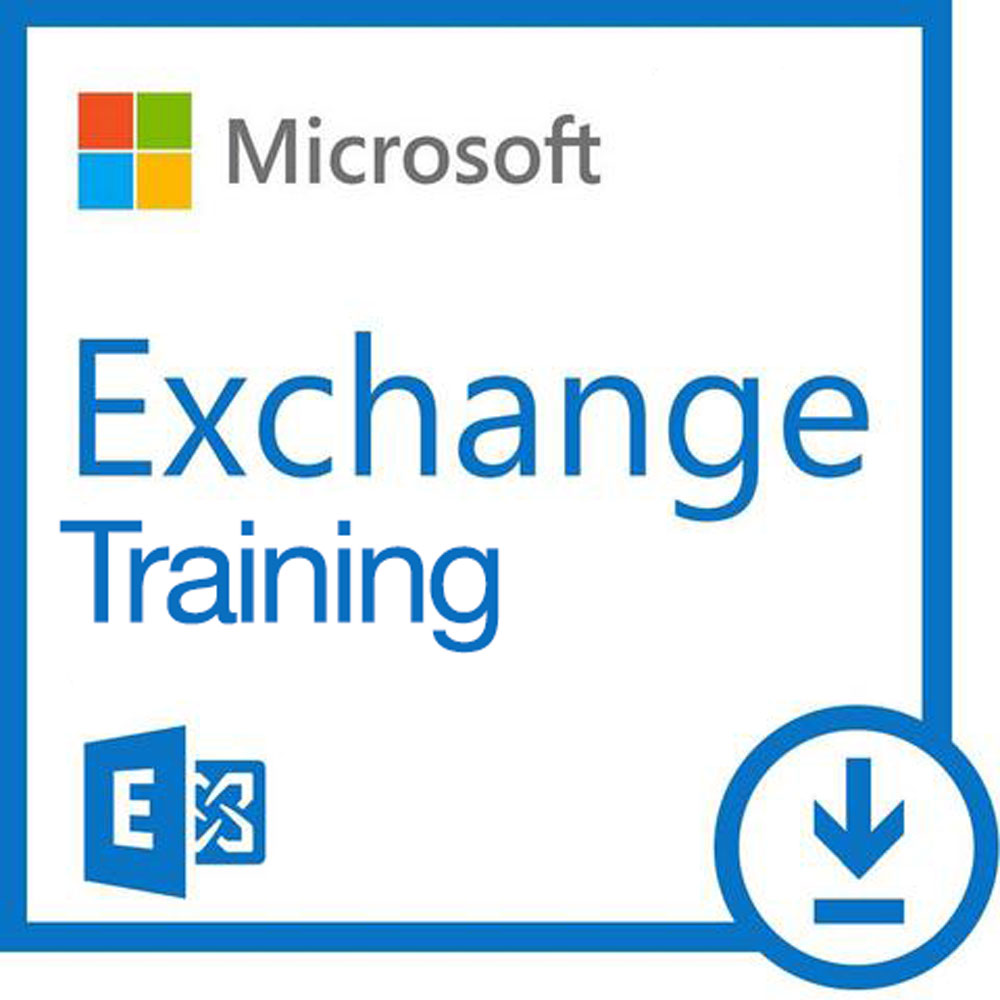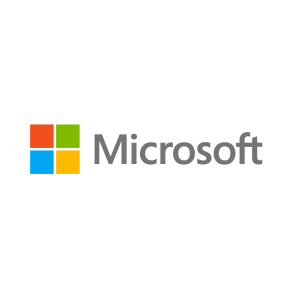Description
About this On Demand Course
The Microsoft on-demand product is an integrated on-line training experience that includes video, labs, exercises, text and knowledge checks. Attendees experience all of this through an on-demand course player.
What’s included?
- Access to the official Microsoft Video on Demand Course for 90 days from the point of first access, allowing you to start and stop when you need to.
- Lab access for 3 months from start of access.
- Digital edition of the Microsoft Official Curriculum (DMOC) manual for reference throughout your course. All DMOC come with fresh editions so your courseware will always be up to date.
- MCT Support via our Microsoft Training Support Yammer Group (you will be invited to the group after registration)
- The content is based on the same official courseware we use in our instructor-led training, and videos feature engaging experts hand-selected by Microsoft. Unlike other on-demand offerings that offer simulated labs, MOC On-Demand gives you a live, real-time environment for hands-on training.
About this Course
This course will provide you with the knowledge and skills to configure and manage a Microsoft Exchange Server 2013 messaging environment. This course will teach you how to configure Exchange Server 2013, and it will provide guidelines, best practices, and considerations that will help you optimize your Exchange Server deployment.
Audience Profile
This course is intended for people aspiring to be enterprise-level messaging administrators. Others who may take this course include IT generalists and help desk professionals who want to learn about Exchange Server2013. People coming into the course are expected to have at least 3 years of experience working in the IT field typically in the areas of network administration, help desk, or system administration. Students are expected to have experience with Exchange Server 2013 or with previous versions of Exchange Server.
In addition, this course is intended as preparation material for IT professionals who are looking to take the exam 70-342A: Microsoft Exchange Server2013, Advanced Solutions, as a stand-alone, or as part of the requirement for the MCSE: Microsoft Exchange Server 2013 certification.
Prerequisites
In addition to their professional experience, students who attend this training should already have the following technical knowledge:
- Passed 70-341: Core Solutions of Microsoft Exchange Server 2013, or equivalent
- Minimum of two years of experience working with Exchange Server
- Minimum of six months of experience working with Exchange Server 2010or Exchange Server 2013
- Minimum of two years of experience administering Windows Server, including Windows Server 2008 R2 or Windows Server 2012
- Minimum of two years of experience working with Active Directory
- Minimum of two years of experience working with name resolution, including DNS
- Experience working with certificates, including public key infrastructure (PKI) certificates
- Experience working with Windows PowerShell
Students who attend this training can meet the prerequisites by attending the following courses, or by obtaining equivalent knowledge and skills:
Course 20341: Core Solutions of Microsoft Exchange Server 2013
At Course Completion
After completing this course, students will be able to:
- Design and implement Exchange Server 2013 Unified Messaging.
- Design and implement site resiliency for Exchange Server 2013.
- Plan a virtualization strategy for Exchange Server 2013 roles.
- Design and implement message transport security.
- Design and implement message retention in Exchange Server 2013.
- Design and implement messaging compliance.
- Design and implement administrative security in an Exchange Server 2013 environment.
- Use Windows PowerShell 3.0 to manage Exchange Server 2013.
- Design and implement integration with Exchange Online.
- Design and implement messaging coexistence.
- Design and implement Exchange Server migrations from non-Exchange messaging systems, and upgrades from previous Exchange Server versions.
Course Outline
Module 1: Overview of Exchange Server 2013 Unified Messaging
This module explains the basic concept of Unified Messaging in Exchange Server 2013.
Lessons
- Lesson 1: Telephony technologies overview
- Lesson 2: Unified Messaging in Exchange Server 2013
- Lesson 3: Unified Messaging components
Lab: Unified Messaging Overview
Exercise 1: Identifying Unified Messaging components
After completing this module, students will be able to
Explain the basic concept of Unified Messaging in Exchange Server 2013.
Module 2: Designing and implementing Exchange Server 2013 Unified Messaging
This module explains how to design and implement Exchange Server 2013Unified Messaging.
Lessons
- Lesson 1: Designing a Unified Messaging deployment
- Lesson 2: Deploying and configuring Unified Messaging components
- Lesson 3: Integrating Exchange Server 2013 Unified Messaging with Lync
Lab: Designing and Implementing Exchange Server 2013 Unified Messaging
- Exercise 1: Designing the Unified Messaging implementation
- Exercise 2: Configuring Unified Messaging features
- Exercise 3: Configuring Unified Messaging integration with Lync Server2013
After completing this module, students will be able to
Design and implement Exchange Server 2013 Unified Messaging.
Module 3: Designing and implementing site resiliency
This module explains how to design and implement site resiliency for Exchange Server 2013.
Lessons
- Lesson 1: Site resiliency in Exchange Server 2013
- Lesson 2: Planning a site resilient implementation
- Lesson 3: Implementing site resiliency
Lab: Designing and implementing site resiliency
- Exercise 1: Designing a site resilient solution
- Exercise 2: Implementing site resiliency
- Exercise 3: Validating site resiliency
After completing this module, students will be able to
design and implement site resiliency for Exchange Server 2013.
Module 4: Planning virtualization for Exchange Server 2013
This module explains how to plan a virtualization strategy for Exchange Server 2013 roles.
Lessons
- Lesson 1: Hyper-V 3.0 overview
- Lesson 2: Virtualizing Exchange Server 2013 server roles
Lab: Planning virtualization of Exchange Server roles
- Exercise 1: Designing an Exchange Server 2013 deployment for a large organization
- Exercise 2: Designing an Exchange Server 2013 deployment for a medium organization
- Exercise 3: Designing an Exchange Server 2013 deployment for a medium complex organization
After completing this module, students will be able to
Plan a virtualization strategy for Exchange Server2013 roles.
Module 5: Designing and implementing message transport security
This module explains how to design and implement message transport security.
Lessons
- Lesson 1: Overview of policy and compliance requirements
- Lesson 2: Designing and implementing transport compliance
- Lesson 3: Designing and implementing AD RMS integration with Exchange Server 2013
Lab: Designing and implementing message transport security
- Exercise 1: Planning a message transport implementation
- Exercise 2: Implementing message transport security
- Exercise 3: Implementing AD RMS and Exchange Server integration
After completing this module, students will be able to
Design and implement message transport security.
Module 6: Designing and implementing message retention
This module explains how to design and implement message retention in Exchange Server 2013.
Lessons
- Lesson 1: Message records management and archiving overview
- Lesson 2: Designing in-place archiving
- Lesson 3: Designing and implementing message retention
Lab: Designing and implementing message retention
- Exercise 1: Designing message retention and archiving
- Exercise 2: Implementing message retention and archiving
After completing this module, students will be able to
Design and implement message retention in Exchange Server 2013.
Module 7: Designing and implementing messaging compliance
This module explains how to design and implement messaging compliance.
Lessons
- Lesson 1: Designing and implementing data loss prevention
- Lesson 2: Designing and implementing an in-place hold
- Lesson 3: Designing and implementing in-place e-discovery
Lab: Designing and implementing messaging compliance
- Exercise 1: Designing messaging compliance
- Exercise 2: Implementing data loss prevention
- Exercise 3: Implementing in-place e-discovery
- Exercise 4: Comparing messaging policy and compliance options
After completing this module, students will be able to
Design and implement messaging compliance.
Module 8: Designing and implementing administrative security and auditing
This module explains how to design and implement administrative security in an Exchange Server 2013 environment.
Lessons
- Lesson 1: Designing and implementing role based access control
- Lesson 2: Designing and implementing split permissions
- Lesson 3: Planning and implementing audit logging
Lab: Designing and implementing administrative security and auditing
- Exercise 1: Designing a solution to fulfill requirements
- Exercise 2: Implementing role based access control
- Exercise 3: Implementing mailbox access and administrative logging
- Exercise 4: Implementing and testing split permissions
After completing this module, students will be able to
Design and implement administrative security in an Exchange Server 2013 environment.
Module 9: Managing Exchange Server 2013 with Exchange Management Shell
This module explains how to use Windows PowerShell 3.0 to manage Exchange Server 2013.
Lessons
- Lesson 1: Overview of Windows PowerShell 3.0
- Lesson 2: Using Exchange Management Shell to manage Exchange Server recipients
- Lesson 3: Managing Exchange Server 2013 with Exchange Management Shell
Lab: Managing Exchange Server2013 with Exchange Management Shell
- Exercise 1: Exploring Exchange Management Shell
- Exercise 2: Using Exchange Management Shell to manage recipients
After completing this module, students will be able to
Use Windows PowerShell 3.0 to manage Exchange Server2013.
Module 10: Designing and implementing integration with Exchange Online
This module explains how to design and implement integration with Exchange Online.
Lessons
- Lesson 1: Planning for Exchange Online
- Lesson 2: Planning and implementing the migration to Exchange Online
- Lesson 3: Planning coexistence with Exchange Online
Lab: Designing integration with Exchange Online
- Exercise 1: Designing integration with Exchange Online
- Exercise 2: Implementing integration with Exchange Online
After completing this module, students will be able to
Design and implement integration with Exchange Online.
Module 11: Designing and implementing messaging coexistence
This module explains how to design and implement messaging coexistence.
Lessons
- Lesson 1: Designing and implementing federation
- Lesson 2: Designing coexistence between Exchange organizations
- Lesson 3: Designing and implementing cross-forest mailbox moves
Lab: Implementing messaging coexistence
- Exercise 1: Implementing Message Routing Coexistence
- Exercise 2: Migrating user mailboxes
- Exercise 3: Configuring administrative coexistence
After completing this module, students will be able to
Design and implement messaging coexistence.
Module 12: Designing and implementing Exchange Server migrations and upgrades
This module explains how to design and implement Exchange Server migrations from non-Exchange messaging systems, and upgrades from previous Exchange Server versions.
Lessons
- Lesson 1: Designing migration from non-Exchange email systems
- Lesson 2: Planning the upgrade from previous Exchange versions
- Lesson 3: Implementing the migration from previous Exchange versions
Lab: Designing and implementing Exchange Server migrations
- Exercise 1: Planning the migration strategy
- Exercise 2: Deploying Exchange Server 2013 in an Exchange Server 2007organization
- Exercise 3: Migrating all messaging components to Exchange Server 2013
- Exercise 4: Removing the Exchange Server 2007 server
After completing this module, students will be able to
- Design and implement Exchange Server migrations from non-Exchange messaging systems, and upgrades from previous Exchange Server versions.
2013 (On Demand)


